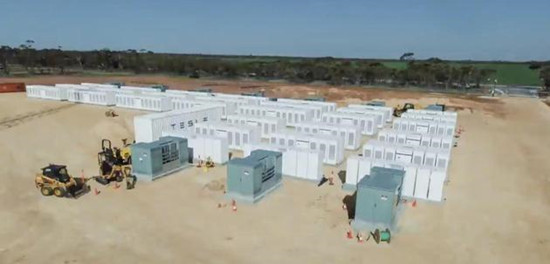How much do you know about 18650 Battery Discharge?
Aug 20, 2019 Pageview:1765
Congratulations on owning an 18650 battery. Now, you need to know how to maintain it. One of the primary items that you will definitely need is an 18650 battery discharge tester. If you really don’t know what an 18650 battery discharge is, then this article is at your best interest.
The growth of devices that need lithium-ion batteries is on the increase in recent times and so is the demand for high levels of quality support and precision. Discharge or charge testing is one of the evaluation test methods that is used to meet such demands. The primary objective of this test is basically to test the number of times a battery can be charged and discharged before deteriorating.
What is 18650 battery Discharge Tester?
A discharge tester is basically a device that is used to test for full insight into the batteries capacity. This will allow the user to properly utilize the battery. That said, an 18650 battery tester is a device that can test the full insight of an 18650 battery capacity.
Discharge testing is the only type of test method that will give you a comprehensive insight into the battery’s capacity. Therefore, it’s an essential battery maintenance programme that every user should be aware of.
Most tests of the 18650 battery can either be conducted at constant current, constant resistance or constant power. Additionally, the test can be conducted with a pre-selected load profile.
In a nutshell, the battery discharge capacity is the measure of the energy that can be stored in your battery. When you are measuring this discharge, you will be searching for the battery’s ability to deliver the specified amount of current constantly.
What really is a Battery Discharge Cycle?
For you to understand how an 18650 battery discharge tester works, then we might have to get a bit technical. So, basically, a discharge cycle is understood as the full discharge that comes from a charged battery with subsequent recharge. However, this might always be the case. A typical 18650 battery has a cycle of about 300-500.
In most cases, batteries will rarely fully discharge. That is why manufacturers will use the 80% DoD (depth of charge) to rate the battery. That means that only 80% of the energy in the battery will be delivered and on the other hand, 20% remains in the reserve. This is also true in several batteries but others have a different DoD. For instance, an EV battery will only discharge 30% and charge up to 80%. The distance between those values gradually widens when the battery starts to decay. Therefore, the battery will avoid full charges and at the same time avoid discharges to reduce any stress on the battery.
Now, when you are able to determine these values in your battery as it decays, you will know how to deal with your device. Discharge cycle has a lot to do with the effectiveness of your battery. Let’s take a look at some of the benefits of 18650 battery discharge tester.
Advantages of 18650 battery discharge tester
Having a device that can help you determine the productivity of our battery is a vital necessity. Some of the advantages of having an 18650 battery discharge tester include:
· With an 18650 battery discharge tester, you will be able to determine where the battery is on the predictable life curve.
· Additionally, this device will let you know when you need to replace your battery.
· And finally, the 18650 battery discharge tester gives you the chance to locate any weak cells and any faulty inter-cell connectors.
Without a doubt, an 18650 battery discharge tester is a device that will come in handy to most users. That’s because most of the devices we use today rely on 18650 batteries. And the majority of users do not know when to replace their batteries or when there are weak cells in the connection. Such information can help you continue with your day to day activities without any interruptions.
How to use 18650 battery discharge tester
Discharge occurs any time you use the battery for power. That is, the electricity in the battery is drawn from your device and the battery charges the current. Basically, an 18650 battery discharge tester measures the cycles in an 18650 battery. These cycles are calculated by determining the difference in capacity in your cell from the first use rating to its present use rating.
For instance, if your battery started off at 3000mAh and currently is at 2900mAh, then the battery is at 96% of its original capacity. When this cycle reaches 80%, then we say that its first cycle has ended. However, you might still get thousands of more cycles from the same battery. At 80%, we say that its life has ended and you might need a new battery cell.
As I said earlier, 18650 batteries typically have up to 500 life cycle. However, when the battery is exposed to high-drain situations or high amp, the number of the life cycle will decrease to around 200 cycles depending on the activity. More importantly, if you ever go past the maximum discharge limit, then the cycles will decrease substantially all the way to 50 cycles.
On the other hand, when the conditions are optimum, the 18650 battery might even surpass the 500 cycles. Some scientists are able to achieve thousands of times of cycles even before the battery reaches 80% of their capacity.
Before you go…
The longevity of your battery majorly depends on how you use it. If you know how to take care of your battery, then it will likely serve you for quite a long time. However, when the battery is exposed to unfavourable conditions, then it will likely die before its due time. That said, having a battery discharge tester will help you take care of your battery. More importantly, you will also be aware of when to replace it. All in all, 18650 batteries are able to cater to the needs of your devices.
- Prev Article: You Should Know More About 18650 Lithium Battery Protection Boards
- Next Article: Self-Discharge Rate of Lithium-Ion Battery
Leave Message
Hottest Categories
-
Hottest Industry News
-
Latest Industry News











